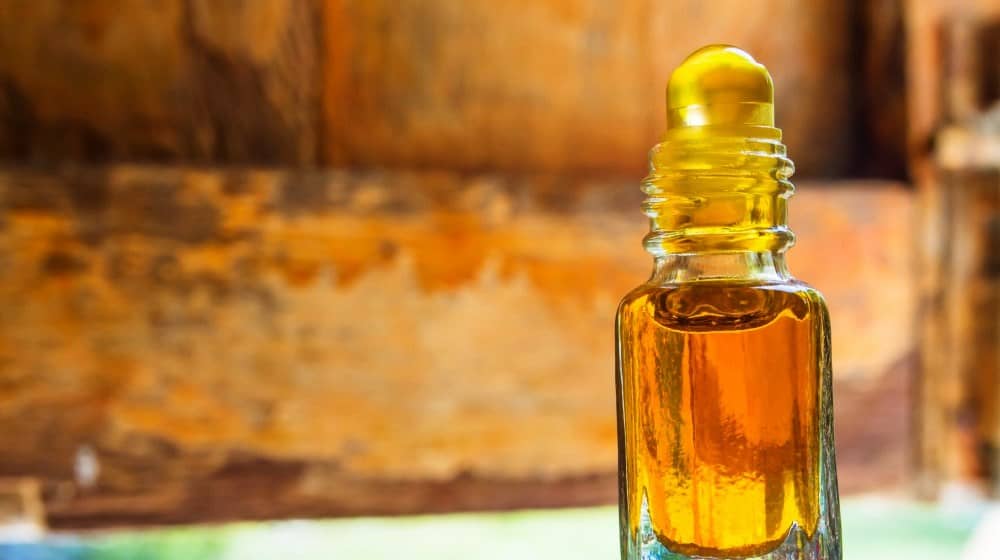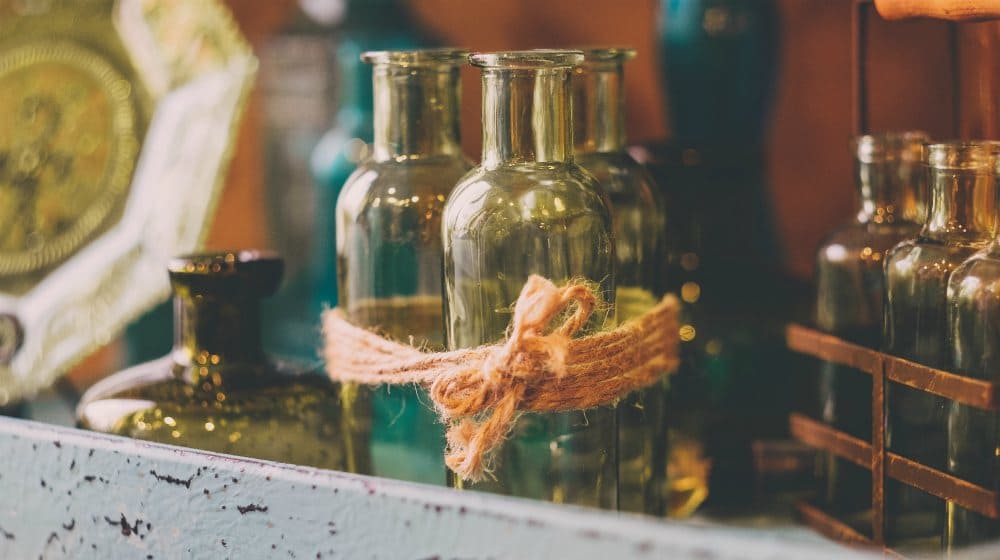Table of Contents
Cradle cap is a common condition that affects many babies, causing flaky, dry patches on their scalps. Luckily, there are natural remedies that can help soothe and nourish your baby’s delicate scalp. One popular option is using essential oils. These oils can provide relief to the affected area, promoting healthy skin and reducing the symptoms of cradle cap. With their antimicrobial and anti-inflammatory properties, essential oils can be an effective treatment option for managing cradle cap.
Key Takeaways:
- Essential oils can offer relief for cradle cap by soothing and nourishing the baby’s scalp.
- They have antimicrobial and anti-inflammatory properties that can reduce symptoms.
- Properly diluting essential oils and using a carrier oil is essential for baby’s safety.
- Other natural remedies, such as gentle brushing and mild shampoos, can also help manage cradle cap.
- If the condition worsens or causes discomfort, seek medical advice.
1 What is Cradle Cap?
Cradle cap, also known as seborrheic dermatitis, is a common skin condition that primarily affects newborns and infants. It is characterized by greasy, yellow or white scales or crusts that develop on the scalp. While the exact cause is unknown, it is believed to occur due to an overproduction of oil on the scalp. Cradle cap is typically harmless and doesn’t cause any discomfort to the baby, but it can be visually concerning to parents. Proper baby scalp care is essential to manage and treat cradle cap effectively.
| Cradle Cap | Baby Scalp Care | Infant Scalp Issues |
|---|---|---|
| Greasy, yellow or white scales or crusts on the scalp | Proper care and maintenance of the baby’s scalp | Common skin issues in newborns and infants |
| Harmless and doesn’t cause discomfort | Necessary for managing and treating cradle cap | May require attention and treatment |
| Primarily affects newborns and infants | Visually concerning to parents | Can be managed with proper care |
“Cradle cap, characterized by greasy, yellow or white scales or crusts, is a common condition among newborns and infants. While it doesn’t cause any discomfort to the baby, it can be visually concerning to parents. Providing proper baby scalp care is essential for managing and treating cradle cap effectively.”
2 Benefits of Essential Oils for Cradle Cap
When it comes to managing cradle cap, essential oils offer a wide range of benefits. These natural remedies have properties that can soothe your baby’s skin, reduce inflammation, and promote healing. Not only do they provide nourishment to the scalp, keeping it moisturized and hydrated, but they also have antimicrobial and antifungal properties that can help combat any potential infections that may arise from cradle cap.
Essential oils are a safe and effective option for treating cradle cap due to their gentle nature. They are free from harsh chemicals and additives, making them suitable for your baby’s delicate skin. By using essential oils, you can provide relief to your little one and improve the overall condition of their scalp.
Natural Soothing and Healing Properties
Essential oils are known for their natural soothing and healing properties. They can help calm inflamed skin and reduce redness and itching caused by cradle cap. The oils penetrate the skin and promote the healing process, allowing for healthier and smoother skin to replace the flaky patches typically associated with cradle cap.
“Essential oils have been used for centuries for their therapeutic benefits. They can help alleviate a wide range of skin conditions, including cradle cap, by providing nourishment and promoting healing.”
Hydration and Moisturization
Keeping the scalp moisturized is essential for managing cradle cap effectively. Essential oils, such as coconut oil and almond oil, have excellent moisturizing properties that can prevent dryness and help restore the skin’s natural moisture balance. Regularly applying essential oils to the scalp can keep it nourished, hydrated, and less prone to developing dry and flaky patches.
Antimicrobial and Antifungal Protection
Cradle cap can sometimes lead to secondary infections due to the buildup of oils and dead skin cells. Essential oils, like tea tree oil and lavender oil, have antimicrobial and antifungal properties that can help combat these infections and keep the scalp healthy. These oils have natural agents that fight off bacteria and fungi, reducing the risk of further complications and promoting a clean and healthy scalp.
Safe and Gentle for Baby’s Delicate Skin
One of the biggest advantages of using essential oils for cradle cap is their safety for your baby’s delicate skin. Unlike chemical-laden products, essential oils are natural and gentle, minimizing the risk of adverse reactions or irritations. However, it is important to properly dilute the essential oils before application and perform a patch test to ensure your baby does not have any allergies or sensitivities.
By harnessing the power of essential oils, you can provide your baby with a natural and nourishing remedy for cradle cap. These oils offer multiple benefits that help soothe and heal the scalp, keeping it moisturized, protected, and free from discomfort.
| Essential Oil | Benefits |
|---|---|
| Tea tree oil | Antimicrobial properties Reduces inflammation and itching |
| Lavender oil | Soothing properties Promotes relaxation and healing |
| Chamomile oil | Gentle and moisturizing Reduces redness and irritation |
| Coconut oil | Nourishing and hydrating Keeps the scalp moisturized |
3 Essential Oils for Cradle Cap
When it comes to managing cradle cap, essential oils can be a natural and effective solution. Several essential oils are commonly used for treating this condition, each with its own unique benefits. By incorporating these oils into your baby’s scalp care routine, you can help soothe and nourish their delicate skin, promoting a healthy scalp.
One popular essential oil for cradle cap is tea tree oil. Known for its antimicrobial properties, tea tree oil can help reduce inflammation and itching caused by cradle cap. Its soothing nature provides relief to the affected area, while its antimicrobial properties combat potential infections.
“Tea tree oil has been a lifesaver for managing my baby’s cradle cap. It not only calms the itchiness but also helps reduce the flakiness and redness on his scalp.” – Emily, mother of a 6-month-old
Lavender oil is another excellent choice for managing cradle cap. Its soothing properties can help relax and heal the skin, providing relief to your little one. Additionally, lavender oil has a gentle scent that promotes relaxation, creating a calming environment for your baby.
Chamomile oil is known for its gentle and moisturizing effects. It can help hydrate your baby’s scalp while reducing redness and irritation caused by cradle cap. Chamomile oil’s soothing properties make it a popular choice for managing this condition.
Although not classified as an essential oil, coconut oil is often used for managing cradle cap due to its nourishing and hydrating effects. Coconut oil helps moisturize the scalp, keeping it healthy and preventing excessive dryness.
These essential oils and oils can be used alone or in combination, depending on your baby’s specific needs. However, it is important to remember that essential oils must be properly diluted to ensure safety and avoid skin irritation, especially on your baby’s sensitive scalp.
Next, we will discuss how to effectively use essential oils for cradle cap and additional natural remedies to consider.
4 How to Use Essential Oils for Cradle Cap
When it comes to managing cradle cap, using essential oils can be a soothing and natural option. To ensure safe and effective application, follow these steps:
- Dilute the essential oil: Essential oils should never be applied directly to the baby’s scalp as they are highly concentrated and may cause skin irritation. Instead, dilute the essential oil with a carrier oil, such as coconut oil or jojoba oil. This helps reduce the risk of any adverse reactions and ensures gentle application.
- Gently massage onto the scalp: Once properly diluted, apply the essential oil mixture onto the affected areas of the scalp. Use your fingertips to gently massage the oil in circular motions. This helps promote circulation and allows the oil to penetrate the scalp, providing nourishment and relief.
- Use a cradle cap shampoo or wash: In addition to essential oils, using a gentle cradle cap shampoo or wash can further aid in managing cradle cap. After massaging the essential oil onto the scalp, cleanse the area with a mild shampoo specifically designed for cradle cap. This helps remove any excess oil or scales, keeping the scalp clean and moisturized.
Regularly massaging and moisturizing the scalp with essential oils is key to alleviating the symptoms of cradle cap. Remember to always prioritize your baby’s safety by diluting the essential oils properly and using a gentle cradle cap shampoo or wash. By following these steps, you can effectively manage cradle cap and promote a healthy scalp for your little one.
5 Precautions and Safety Tips
While using essential oils for cradle cap can be beneficial in managing the condition, it is important to prioritize your baby’s safety. Taking certain precautions and following safety guidelines will ensure a positive experience and reduce the risk of adverse reactions.
Dilute Essential Oils Properly
Before applying essential oils to your baby’s scalp, it is crucial to dilute them properly. This helps to minimize the concentration of the oil and reduce the risk of skin irritation or allergic reactions. Dilute essential oils with a carrier oil, such as coconut oil or jojoba oil, to ensure a gentle and safe application.
Perform a Patch Test
Performing a patch test is essential before using any essential oil for cradle cap. Apply a small amount of the diluted oil to a small area of your baby’s skin, such as the inner wrist or behind the ear. Monitor the area for any signs of redness, irritation, or discomfort. If a negative reaction occurs, discontinue use immediately.
Avoid Using on Broken or Irritated Skin
It is important to avoid applying essential oils to broken or irritated skin. Cradle cap can sometimes cause minor breaks or redness on the scalp, which may make it more sensitive. Give the affected area time to heal before introducing essential oils.
Monitor for Adverse Reactions
Watch for any signs of discomfort or adverse reactions when using essential oils for cradle cap. If your baby develops rashes, excessive redness, swelling, or any other concerning symptoms, discontinue the use of essential oils and consult a healthcare professional for further guidance.
Consult a Pediatrician or Healthcare Professional
Prior to using essential oils for cradle cap, it is always recommended to consult with your pediatrician or a qualified healthcare professional. They can provide personalized advice based on your baby’s specific needs and medical history, ensuring the safety and effectiveness of the treatment.
Remember, the well-being of your baby is the utmost priority. By taking these precautions and following safety tips, you can confidently use essential oils as natural remedies for cradle cap while keeping your baby’s scalp healthy and nourished.
6 Other Remedies for Cradle Cap
In addition to essential oils, there are other natural remedies that can help manage cradle cap. These remedies can provide relief and nourishment to your baby’s scalp, promoting healthy skin and reducing the symptoms of cradle cap. Here are some alternative methods you can try:
1. Gentle Brushing or Combing
Gently brushing or combing your baby’s scalp can help loosen the scales and promote circulation. Use a soft-bristled brush or a fine-tooth comb to carefully remove the flaky patches. Remember to be gentle to avoid irritating your baby’s sensitive scalp.
2. Warm Washcloth Application
Applying a warm washcloth to the affected areas can help soften the scales, making them easier to remove. Soak a clean washcloth in warm water, wring out the excess, and gently press it onto your baby’s scalp. Leave it on for a few minutes to allow the warmth to loosen the scales, and then use a gentle motion to wipe them away.
3. Mild Baby-Friendly Shampoo or Wash
Using a mild, baby-friendly shampoo or wash can help keep the scalp clean and nourished. Look for products that are specifically formulated for infants and are gentle on their delicate skin. These products can help remove excess oil, dirt, and flakes while moisturizing the scalp.
4. Good Hygiene Practices
Maintaining good hygiene practices is essential for managing cradle cap effectively. Regularly wash your baby’s scalp with a gentle cleanser, ensuring you rinse thoroughly to remove any residue. Pat the scalp dry with a soft towel and avoid harsh rubbing that can cause irritation. Keeping the scalp clean and moisturized can help prevent the recurrence of cradle cap.
Remember, each baby is unique, and what works for one may not work for another. It may take some trial and error to find the remedy that suits your baby’s needs best. If symptoms persist or worsen, it is advisable to seek medical advice from a pediatrician or a qualified healthcare professional.
7 When to Seek Medical Advice
In most cases, cradle cap can be effectively managed at home with natural remedies and essential oils. However, it is important to be aware of when it is necessary to seek medical advice for your baby’s cradle cap.
If the condition worsens or spreads to other areas of the body, it is recommended to consult a pediatrician or a qualified healthcare professional. They can provide a proper diagnosis and determine the best course of treatment to address the worsening symptoms.
Additionally, if cradle cap is causing discomfort to your baby, such as constant itching or irritation, it is important to seek medical advice. A healthcare professional can evaluate the severity of the condition and recommend suitable treatments or medications to alleviate your baby’s discomfort.
Monitoring the condition is essential, especially if natural remedies and essential oils do not seem to be improving the symptoms. If you are unsure about how to manage your baby’s cradle cap or if you have any concerns, do not hesitate to seek medical attention.
Remember, the well-being of your baby is the top priority, and seeking medical advice can ensure that your baby receives the appropriate care and treatment for their cradle cap.
For more information on managing cradle cap, continue reading the following sections.
8 Conclusion
Cradle cap, a common condition affecting many babies, can be effectively managed with natural solutions. Utilizing essential oils, such as tea tree oil, lavender oil, and chamomile oil, can provide relief and nourishment to your baby’s delicate scalp. These oils possess antimicrobial and anti-inflammatory properties, making them excellent options for cradle cap treatment.
When using essential oils, remember to dilute them properly with carrier oils like coconut oil to avoid skin irritation. Gently massage the oils onto the affected scalp, ensuring to cleanse with a mild cradle cap shampoo or wash. Maintain good hygiene practices and moisturize the scalp regularly to keep it healthy and nourished.
While essential oils can be beneficial, it is crucial to prioritize your baby’s safety. Always consult with a healthcare professional if needed and discontinue use if any adverse reactions occur. By implementing a consistent care routine with natural remedies, you can effectively manage cradle cap and promote a comfortable and healthy scalp for your little one.
FAQ
What is cradle cap?
Cradle cap is a common skin condition that primarily affects newborns and infants. It is characterized by greasy, yellow or white scales or crusts that develop on the scalp.
How can I treat cradle cap?
Cradle cap can be treated using natural remedies and essential oils. These remedies help soothe and nourish your baby’s scalp, reducing the symptoms of cradle cap.
What are the benefits of using essential oils for cradle cap?
Essential oils have natural properties that can soothe the skin, reduce inflammation, and promote healing. They also provide nourishment to the baby’s scalp, keeping it moisturized and hydrated.
Which essential oils are commonly used for cradle cap?
Tea tree oil, lavender oil, chamomile oil, and coconut oil are commonly used essential oils for cradle cap.
How should I use essential oils for cradle cap?
Dilute the essential oils properly with a carrier oil, and gently massage the mixture onto the affected areas of the scalp. Use a gentle cradle cap shampoo or wash to cleanse the scalp and remove any excess oil or scales.
Are there any precautions or safety tips for using essential oils on my baby’s scalp?
It is important to dilute essential oils properly, perform a patch test, and avoid using them on broken or irritated skin. If your baby shows any signs of discomfort or adverse reactions, discontinue use immediately and consult with a healthcare professional.
Are there any other remedies for cradle cap?
Other remedies for cradle cap include gentle brushing or combing of the scalp, applying a warm washcloth to soften the scales, and using a mild, baby-friendly shampoo or wash to keep the scalp clean and nourished.
When should I seek medical advice for cradle cap?
If the condition worsens, spreads to other areas of the body, or causes discomfort to your baby, it is advisable to seek medical advice from a pediatrician or qualified healthcare professional.
How can I effectively manage cradle cap?
By using natural remedies and essential oils, practicing good hygiene, and regularly moisturizing the scalp, you can effectively manage and treat cradle cap.
We may earn a commission for purchases made using our links. Please see our disclosure to learn more. We appreciate your support SO very much.










